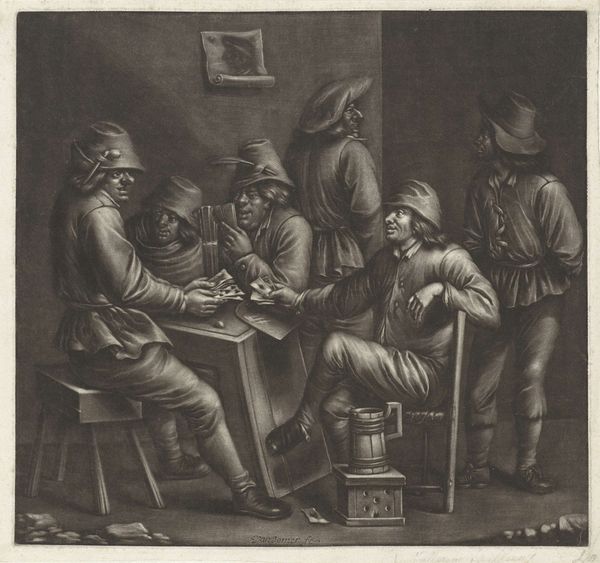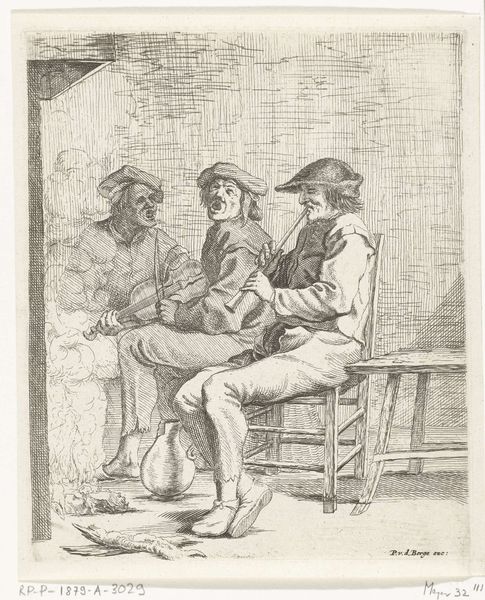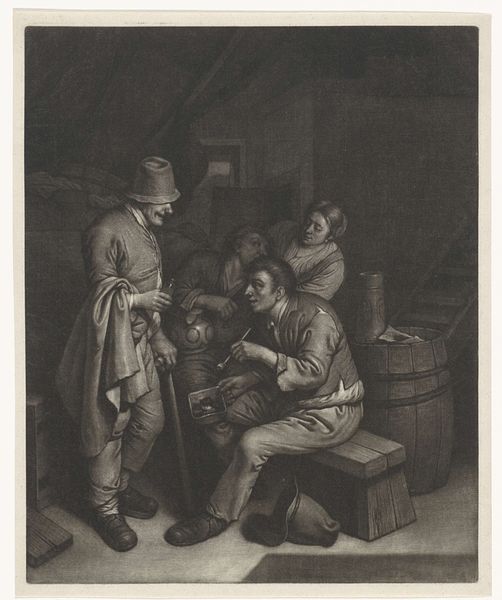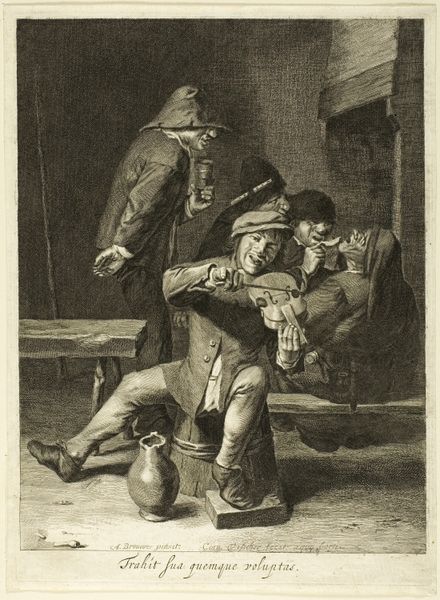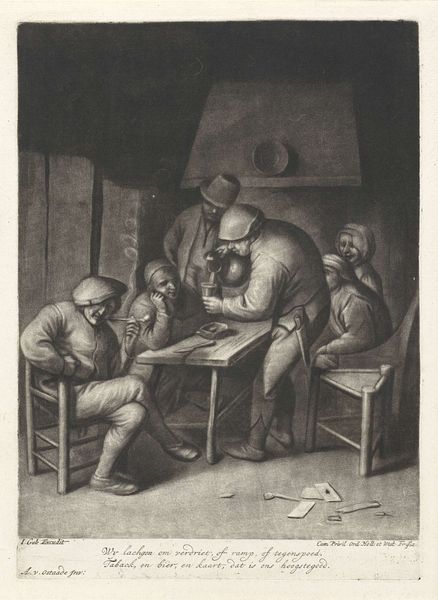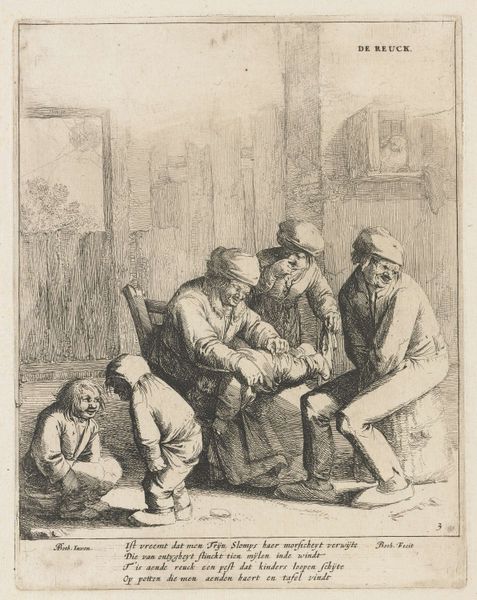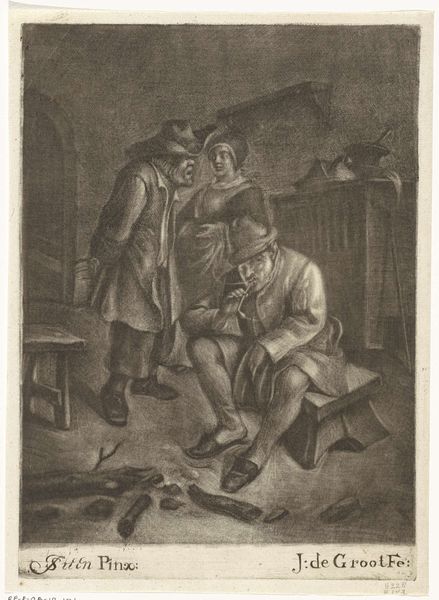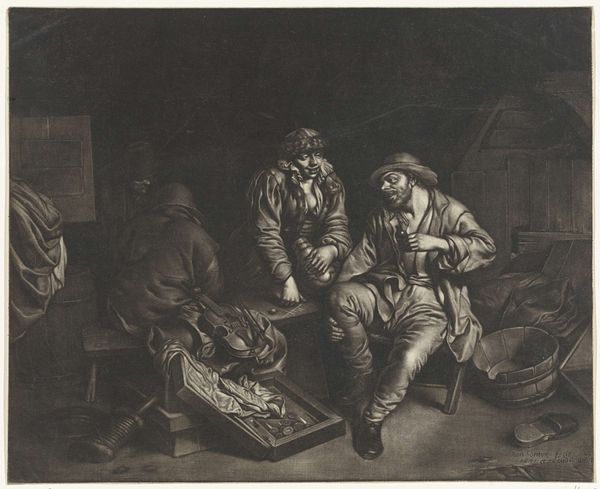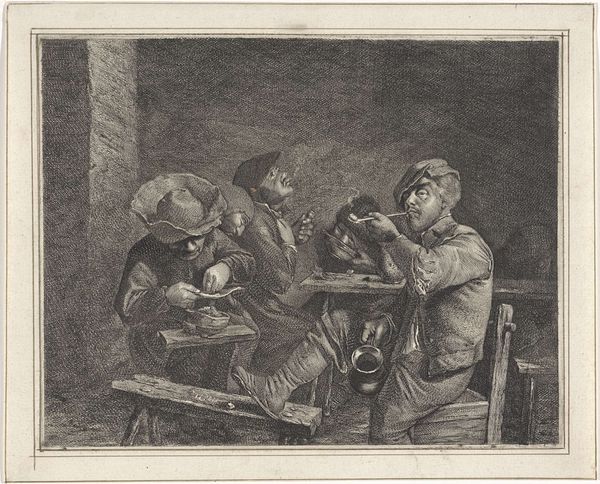
lithograph, print, etching
#
portrait
#
baroque
#
lithograph
# print
#
etching
#
group-portraits
#
genre-painting
Dimensions: height 224 mm, width 180 mm
Copyright: Rijks Museum: Open Domain
Curator: Here we have "Singing Men in a Tavern," dating from between 1658 and 1677, attributed to Wallerant Vaillant. This print combines etching and lithographic techniques to capture a bustling scene. Editor: It’s quite dark, almost monochromatic. The tonality lends a somewhat melancholic mood to what should be a lively gathering. The figures are huddled close; their faces obscured, except for the one gentleman staring blankly into space with a flask nearby. Curator: Indeed. Note how Vaillant manipulates light and shadow to define the spatial arrangement. The strong chiaroscuro throws certain figures into prominence. Semiotically, the pipes and tankards can signify temporary reprieve or even a moral warning, which were quite common in the Dutch Golden Age’s representations of tavern life. Editor: Right, genre scenes of tavern life were laden with moralizing subtexts. The institution of the tavern offered artists an arena to engage broader themes about the public role of imagery, societal attitudes towards class, gender, and conduct within a rapidly urbanizing, mercantile society. Who has the power to be displayed and who remains unseen? Curator: Consider the composition's linearity; how the table functions as a sort of horizontal axis, grounding the various interactions playing out, and see how it contrasts the round and almost inflated form of the bottle near the seated man. It pulls the eye between communal experience versus something far more solitary and almost desperate. Editor: These prints also circulated widely. To possess and display a printed work such as this reflected something about a person's socio-economic standing, a burgeoning Dutch middle-class aesthetic emerging, especially in Amsterdam. Curator: Quite so. I find that even in its muted tones, the lithographic and etched line work adds layers of tactile depth. In isolation, line, form and tone achieve surprising complexities! Editor: And how far this piece speaks to themes of socialization, class, and moral messaging within the historical currents of the Dutch Republic! Curator: Indeed. It leaves much to be pondered, from both artistic and sociohistorical vantages. Editor: Yes, this encounter truly invites deeper reflection on the intersection of image and cultural milieu.
Comments
No comments
Be the first to comment and join the conversation on the ultimate creative platform.

